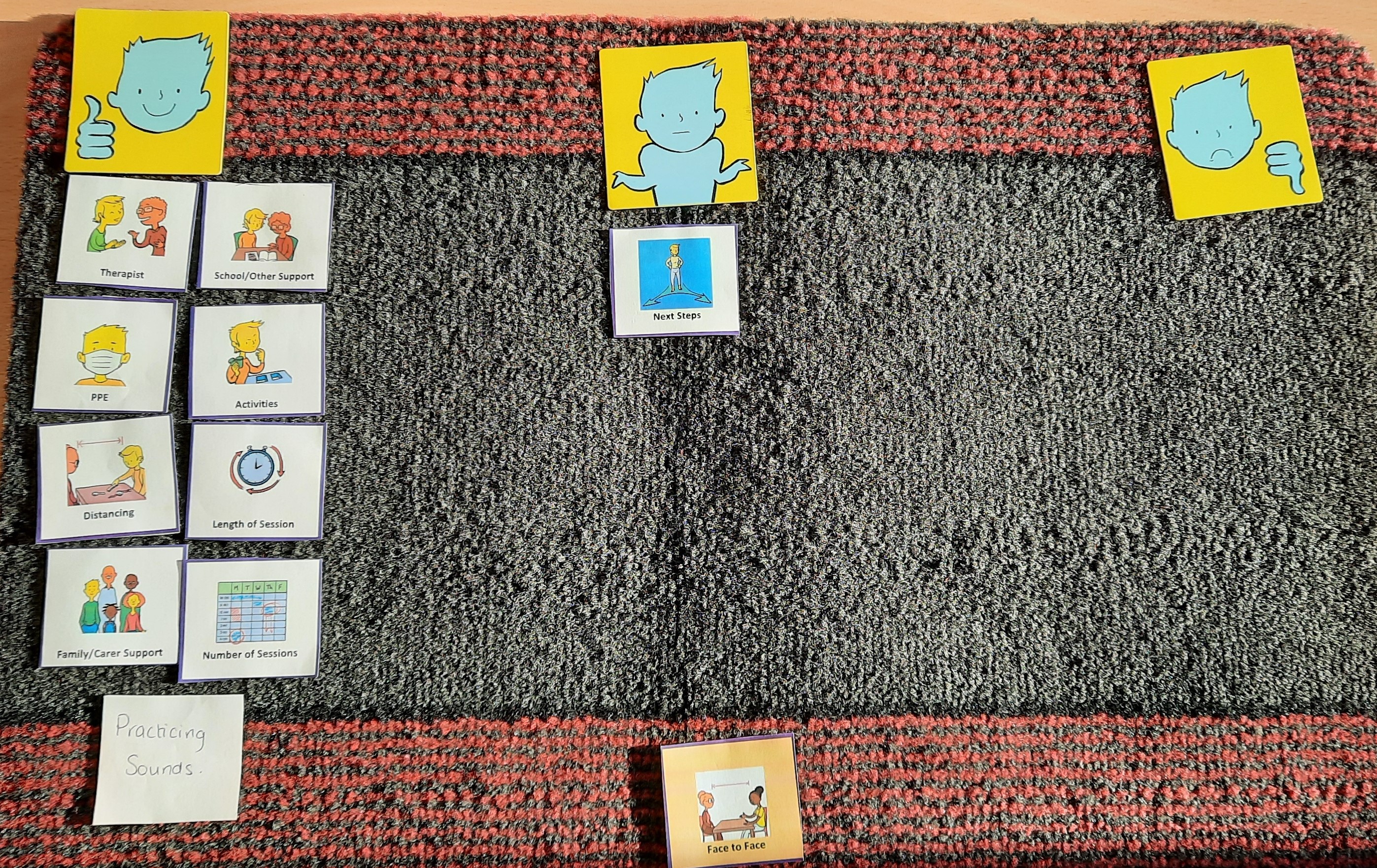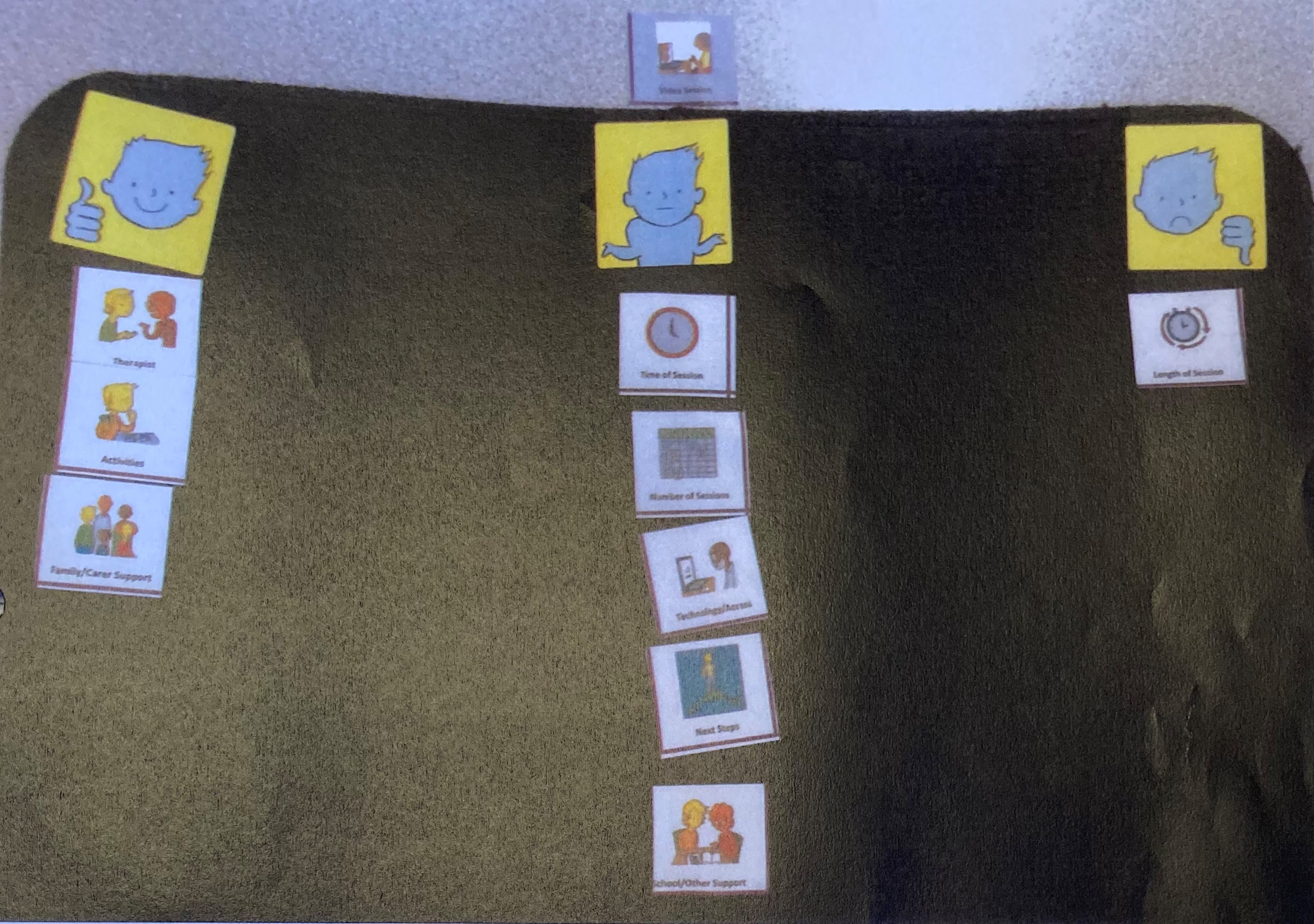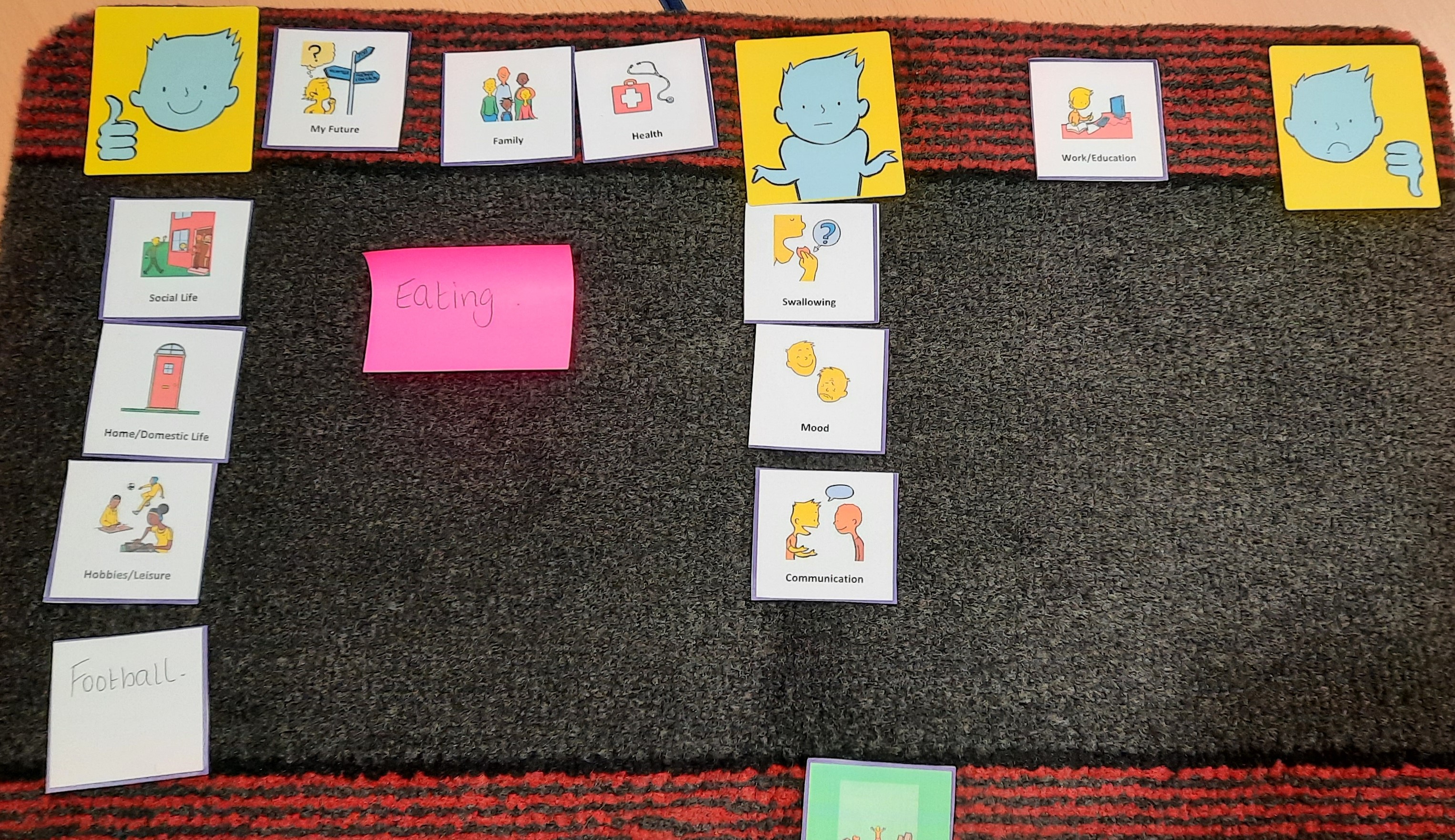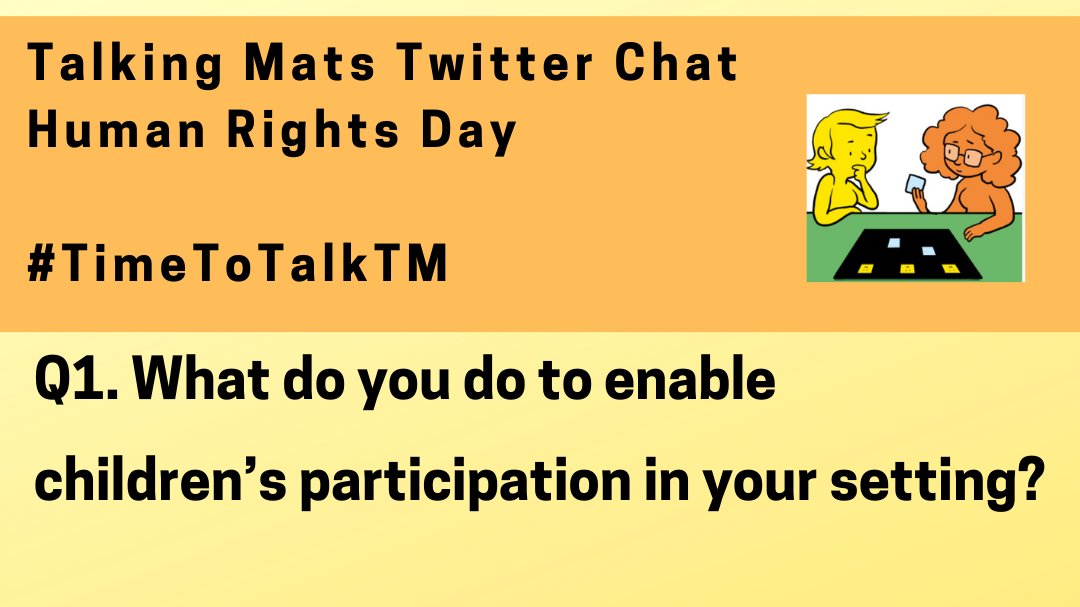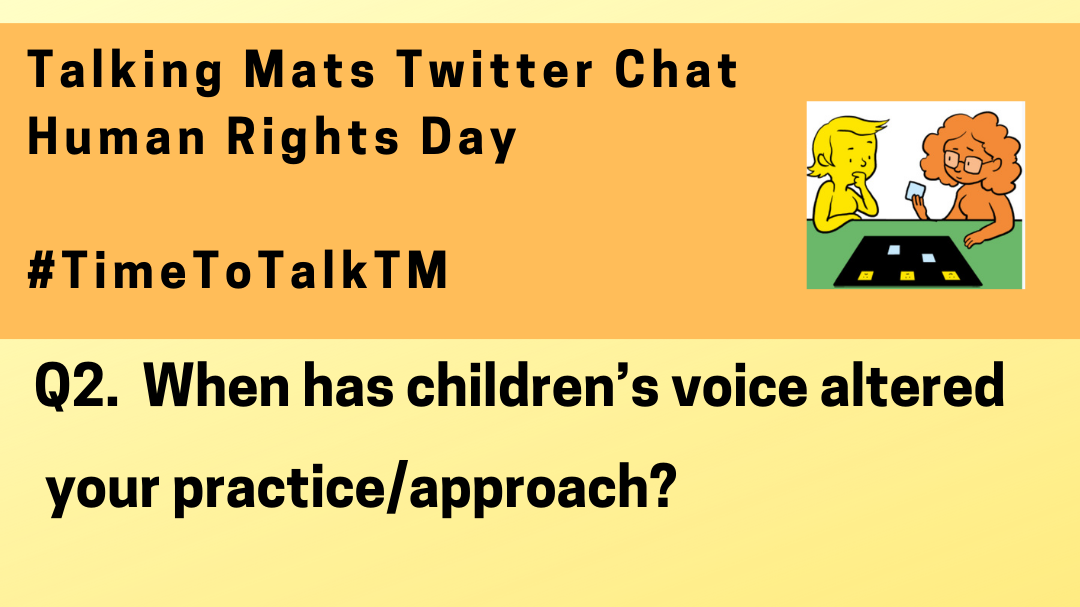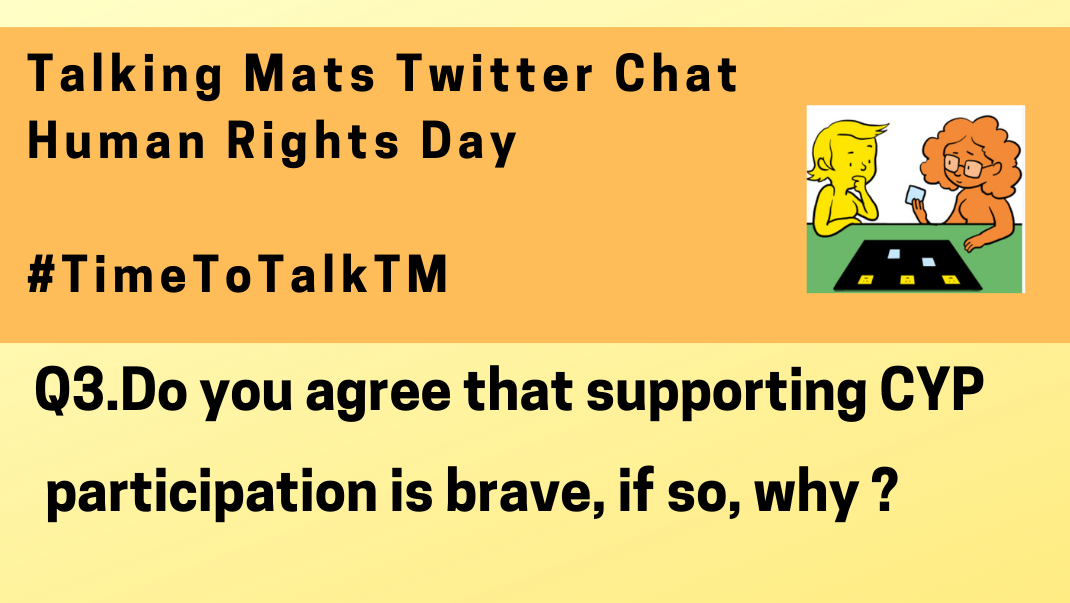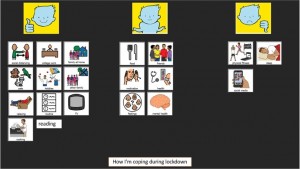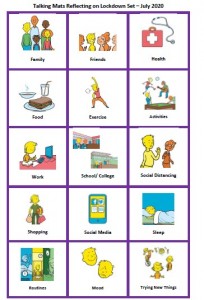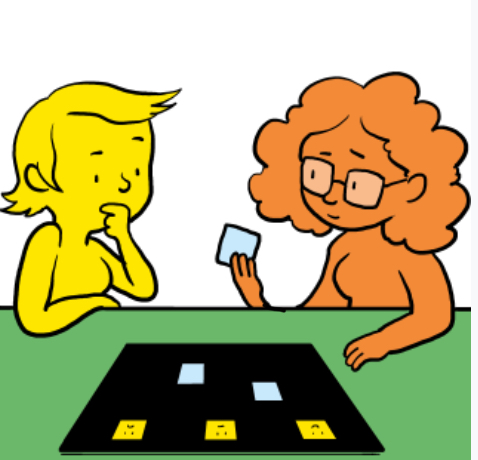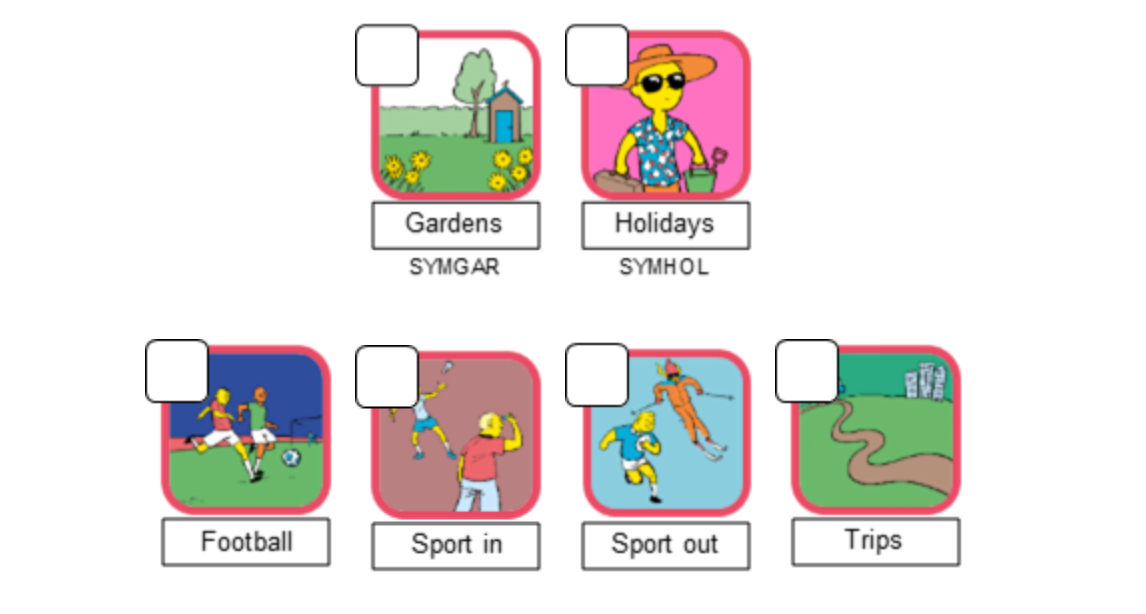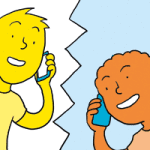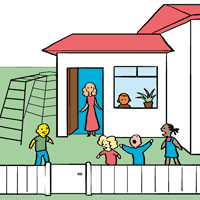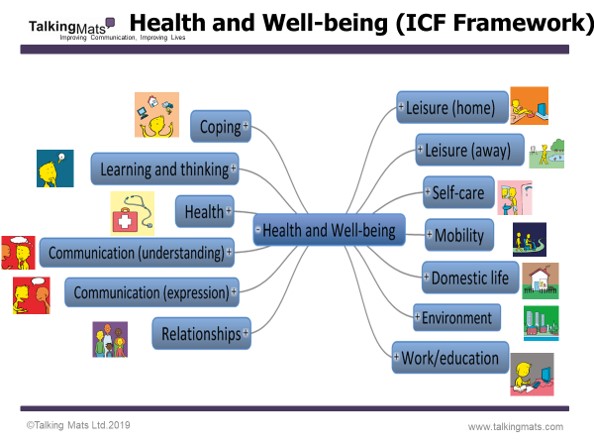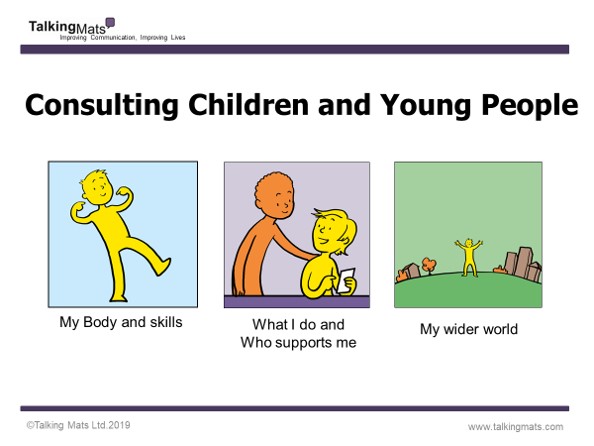Many thanks to Natalie Paris, CashBack 180 Project Lead for our latest guest blog. Natalie shares some powerful examples of how Talking Mats has helped her to open up conversations with the young people she works with:
I joined Y2K Mayfield and Easthouses Youth 2000 Project in February 2018 as a sessional worker looking to gain practical experience in youth work, I then became Part Time Young Women’s worker at Y2K, which gave me experience in working with vulnerable young women in Midlothian across an age range of 11 to 24, some with mild to moderate learning difficulties. When I first heard about the 180 project, I knew it was something I really wanted to be involved with, as I have always been interested in Criminology and Youth Offending.
In September 2018 I became the full-time 180 Project Lead, and have helped to shape and develop our CashBack 180 Project. CashBack 180 is a referral-based service, focusing on early support and prevention for young people involved in or at risk of becoming involved in offending, anti-social and risky behaviours.
The Project:
We work with young people to make positive changes in order to work towards more positive futures. Young people accessing this service have the opportunity to take part in fun, participative and educational programmes of activities as well as 1:1 supports. The CashBack180 programme is delivered at Y2K, but we can also deliver programmes within High Schools.
CashBack 180 offers a menu of options and has adapted where necessary for our journey through the pandemic.
- 1:1 supports
- Groupwork programmes
- Community outreach support through detached youth work
Case Example 1:
A 12-year-old girl had been referred to me for violence, as she had attacked a girl in the playground, which was out of character for her. She was very uncomfortable in the 1 to 1 session, so I used a Talking Mat. This made the conversation flow more naturally.
I used the Relationships topic, with the top scale ‘going well/okay/not going well’. This helped me get more information. I found out that most of the issues she was having were around peer relationships. For example, friends saying things that weren’t true, and not being believed by others in her friendship group. This allowed me to plan a session around what is healthy and unhealthy in friendships.

Case Example 2:
I was working with a 14-year-old care experienced boy, who had been referred to me for Anti-social behaviour, and because he was easily led. Once I got to know this boy a little better, I realised that he did not have much support within his family, apart from his older brother who he lives with now. I realised he was someone who had just learned to cope himself, and probably didn’t have many people to turn to when worried about things. I thought coping would be a good topic for a Talking Mat, as he always said things were fine, but I didn’t feel it was the full truth. I used the top scale ‘going well/okay/not going well’. This gave us the opportunity to discuss healthy and unhealthy coping mechanisms that he had and what he could do instead.

Case Example 3:
I was working with a 12-year-old care experienced boy, who had been referred to me due to his inappropriate sexualised language and reference to sexual experience. He has been out Mainstream school for 1 year, so had missed P7 sex education. I decided to start working on friendships and relationships over the first couple of weeks with him, to get an understanding of what he knew was acceptable in relationships. I used the Relationships Topic with the top scale ‘Going well/Okay/Not going well’. The Talking Mat helped me keep his attention for a little longer than usual, as he is a very chaotic young person and often gets up and walks about, or jumps on tables and pretends to be sleeping. It also showed me that he felt quite happy but was missing his friends from where he used to live. We are now looking at ways to address this.

Follow this link to Find out more about this project:
180 Service – Mayfield and Easthouses Youth 2000 Project
If you are feeling inspired and would like to know how you can access Talking Mats training, find out more here: https://www.talkingmats.com/training/
In these challenging times during lockdown/COVID-19 restrictions we have had to deliver our Speech and Language Therapy sessions differently. In my role as a Speech and Language Therapist for the NHS Stockport Foundation Trust Buy-Back Service, I am gathering feedback from some of the children I work with, using the free RCSLT Talking Mats resource topics described in my previous blog https://www.talkingmats.com/rcslt-lockdown-survey/
Many thanks to the Talking Mats-trained Teaching Assistants, Lucie Porteus (Woodley Primary School), and Dawn Wrigley (Romiley Primary School) for carrying out these sessions with the children involved. Talking Mats is used in both schools as a tool to support children to share their views and opinions about a wide range of topics, which enables child-centred practice and target-setting.
In this blog, I wanted to share some real-life examples for each topic. The topscale used for each topic is ‘Happy/ Not Sure/ Not Happy’:
Face to Face
For this mat session, Dawn took out the symbols that were not relevant. The child was able to express that he was happy about the face-to-face sessions he had been receiving, during which the SLT has had to wear full PPE. The child added a blank to say that he was happy about ‘Practising Sounds’ in particular, and added further information about ‘Activities’, sharing that he especially liked the penguin and fishing games. The child shared that he was not sure about next steps, and so in future sessions I will ensure that these are made clearer.
Mats completed with other children on this topic have helped to explore the impact of use of PPE and a common theme has been that children have not been happy about the SLT’s mask, usually because the child cannot see the SLT’s mouth. In our school sessions we have attempted to resolve this by having a staff member who is part of their school ‘bubble’ present, who is then able to model the speech sounds/language used by the SLT. I am also aware of SLTs who have used video clips of themselves modelling speech sounds, as another potential solution.
Video
This mat enabled the child to share information about how they felt about video sessions using the Attend Anywhere platform. Lucie removed the options which were not relevant. The child was able to communicate that he felt happy about the SLT, Activities, and Family/Carer Support – he was happy that his Dad was sitting with him. The child was not sure about a few of the options such as time and number of sessions – and said that he wanted more sessions. He was also unsure about technology/access and mentioned that ‘sometimes I see her, sometimes I don’t. The child placed length of session on the negative side and said ‘I wanted it longer’. This information has helped me to plan for future video sessions, as I had previously been keeping the activities shorter to help to maintain his attention/focus. It is clear the child is happy about the activities completed and is keen for more – and longer – video sessions in future. I am also aware that I need to be clearer when explaining next steps at the end of the session, which will include letting the child know that he also be working on the activities during his keyworker time in school, with a member school staff.
My Life
This child was able to share lots of additional information during the Talking Mats session, which helped to provide a clearer picture of how he felt about his life during lockdown. For example, for ‘Mood’, he shared that ‘some days I am ok and some days I am not’. For ‘Family’: ‘sometimes I fall out with my brother and my sister annoys me’. School was between not sure and not happy because he said he “only likes Maths and topic and he really doesn’t like English”.
The child put Communication under ‘not sure’ and shared that “sometimes I struggle to talk because of that, and that makes me sad sometimes”.
The main action from this mat was to plan another Talking Mats session to submat ‘communication’, as when Dawn asked him if there was any he wanted to look at in a little more depth, he indicated the communication symbol and had said “that way I can move it from there to happy”. Another option which would be useful to explore further will be ‘mood’, to find out what helps/ does not help.
Exploring the topic ‘communication’ further will enable the child to express which aspects of communication he is feels are ‘going well/ going ok/ not going well’, which will then result in updated SLT target-setting and intervention.
The RCSLT Talking Mats Survey is open until the end of June 2021 – please make use of these free resources so that the children and adults we are working with can have their voices heard about their Speech and Language Therapy Provision during COVID-19 lockdown/restrictions. Please send your feedback forms to: peter.just@rcslt.org
Access your guidance and free resources here:
Symbol Sets: https://www.talkingmats.com/wp-content/uploads/2013/09/Symbol-Set.pdf
Guidance: TM RCSLT guidance text – March 2021
Feedback Form: TM RCSLT TM feedback form
We are looking forward to our second Talking Mats Twitter chat on Thursday 10/12/20 7.30 – 8.30pm.
Join us to discuss and celebrate our new report ‘Can Scotland Be Brave’, which has a specific focus on children and young people’s participation. Find out more about the report here https://www.talkingmats.com/new-report-to-launch-10th-dec/
The report will be launched by the Scottish Government on the same day, to coincide with Human Rights Day 2020.
Here are the questions we will be asking:
Grab a cuppa – or better still, a mulled wine and mince pie! – and join us to share experiences and ideas.
Remember to use the hashtag #TimeToTalkTM on all your posts!
A new report with a focus on children’s participation will launch on Thursday, 10th December. John Swinney, Depute first minister of Scotland said that “The UNCRC (Incorporation) (Scotland) Bill will revolutionise the way we listen to children and take their rights into account”
In 2018, the first review of ‘Ready to Act’ took place: a plan with bold ambitions and a key focus on child participation. Around the same time the Scottish Government was making plans to incorporate UNCRC into law. In preparation for this, the Chief Allied Health Professions Officer, approved project funding for Talking Mats Social enterprise to investigate what was happening across our services in Health, Education and the Third sector. The question we focused on was ‘How much did practitioners understand about the obligations of UNCRC Article 12 and what were they doing to ensure child participation?’.
We chose 3 services who were already committed to upholding children’s rights. We wanted to share good practice and identify areas requiring further support.
- Indigo childcare, a Glasgow based social enterprise. They support families with children from birth up to the age of 16yrs.They provide a platform for improved life chances for young people.
- Langlees Primary school in Falkirk was working towards a Gold Rights Respecting Schools Awards and has an explicit focus on pupil wellbeing.
- Children and Young People’s Occupational Therapists – Fife Health & Social Care Partnership were focussing on increasing the involvement of children and young people in therapy decisions.
Practitioners were trained in how to use Talking Mats. Over three months they were asked to give children and young people a space to share their views. We gathered all the learning and asked the children about how they felt. The overwhelming comment was “It was nice to be listened to” Many practitioners reflected that when CYP are given the opportunity to voice their opinions and are supported to come up with their own solutions, real change happens.
I’m sure John Swinney is right, one thing that will revolutionise our practice is by ensuring our services adhere to the three UNCRC core principles of Dignity, Equality and Respect. We can then incorporate those shared values to give space, voice, audience and influence to the views of our children and young people and that will radically change our approach. We are delighted that this report called Can Scotland Brave will launch on Human Rights Day, Thursday 10/12/20 .
Discuss the report and celebrate with us at our Twitter Chat from 7.30-8.30pm. Watch this space for our second blog which will include more information about the chat.
I stole the lyrics and altered them slightly, but this is the song line that has kept popping into my head over the past few weeks as we find ourselves hurtling through the different phases of lockdown easing. The rules and recommendations that have guided our lives for the past 3 months or so are changing rapidly and change can be difficult. Communicating how we feel about change and life in general can be difficult.
We have seen creative uses of our resources and have really enjoyed learning how they have helped young people and adults express how they coped throughout lockdown and beyond. Kirsten Lamb’s guest blog about Returning to School After Lockdown is just one example of how the TM framework was invaluable in gaining the opinions of young people as they adapted to ongoing changes over which they had little or no control.
https://www.talkingmats.com/returning-to-school-after-lockdown/
Another Talking Mats practitioner recently tweeted this mat that she did with a college student, showing how Talking Mats helped structure thinking about how life was going.
We felt a single resource was needed to help kick start a conversation around Life (but not as we know it; I am sure that’s a song too) looking at the following themes:
- Family / Friends / Bubbles / Social Distancing
- Health
- Mood / Emotion
- Sleep
- Exercise
- Work
- School / College
- Activities
- Shopping
- Routine
As with every Talking Mat you can change the top scale to be more or less concrete, you can use blanks to add in things that we haven’t included, you can leave things out that aren’t relevant. Download your free printable pdf here: LOCKDOWN SET
We look forward to hearing stories from our Talking Mats Community on how you helped others express themselves (definitely another song!)
Youth Justice Research
How can Talking Mats be used in youth justice research? I am a clinical psychology doctoral student at the University of Auckland, New Zealand. My doctoral research is an evaluation of communication assistance in our youth justice system. Communication assistance is New Zealand’s version of the England and Wales intermediary scheme. I used a Talking Mat framework to help understand young people’s experiences of working with a communication assistant.
I first learnt about Talking Mats in 2017 when I attended a workshop on enabling effective communication with children and young people run by Talking Trouble Aotearoa New Zealand (www.talkingtroublenz.org). I have since attended Talking Mats training in New Zealand and have regularly used Talking Mats in my previous work as an intern psychologist at a Child and Adolescent Mental Health Service. I have found them to be an effective way for children and young people to express themselves. They have been especially helpful for young people with whom I am struggling to build rapport, and who only give the odd shrug, nod or head shake to questions asked. I also like the additional information that comes from how the young person places the cards. I remember one teenager boy, for example, who threw down “teacher” and “school” under “things not going well”.
In my doctoral research, I was interested to know what tools or strategies used by communication assistants were helpful or unhelpful. I created 17 picture cards of resources commonly used by communication assistants, such as a laptop, post-it notes and a stress ball. The young person was able to sort these cards into piles, “Yes”, “Don’t Know” or “No” to indicate which ones had been used in their youth justice process(es). The young person then sorted the “Yes” pile under three top cards or headings, “Helpful”, “Don’t Know” and “Unhelpful”. This second Talking Mat was then a starting point for further conversation and some simple off “off the mat” questions.
Again, in my research, the Talking Mats framework provided a way for young people with communication difficulties to let me know their opinion. It helped me to build rapport with young people I had not met before and it took some of the intensity out of the interaction by giving us a shared point of focus. I really appreciated being able to hear young people’s thoughts on communication assistance and the Talking Mats framework (as well as some other visual aids and strategies) allowed this to happen.
You can read more about this research and the findings on my website https://kellyhoward2.wixsite.com/youthjustice or in a recent article in the Youth Justice journal, https://journals.sagepub.com/doi/10.1177/1473225420923763
Thanks to Kelly Howard for writing this blog about her interesting research . We are always delighted to hear where Talking Mats is making an impact and it has more and more uses in youth justice . If you are working in youth justice then take advantage of our current on line training offer Training Order Form – 30% Discount. You will not regret it . Plus, watch this space we are currently working with a youth justice organisation and developing a Talking Mats to support conversations in this setting…
What do the young people I work with think and feel about returning to school after lockdown? I am a Speech and Language Therapist working within the Learning Centre at the Donaldsons Trust in Linlithgow. I work with young people with a variety of communication needs and although the Learning Centre was closed for a short period, we re-opened a few weeks ago to provide continuity for our young people who all have additional needs. Given the current situation, many changes having been put into place to ensure the safety of the staff and children in these unprecedented times. This has included children coming in part-time and on different days from some of their peers and a designated staff team for each group of children. For some children the changes have also meant that their parents now drop them to school rather than coming in a taxi and they have their temperatures taken on arrival. The children now see some staff wearing PPE and they are asked to socially distance from those in their class. They have all coped incredibly well, adapting and accepting these ‘new normals’. As a team we have tried hard to make the transition back into the Learning Centre as relaxed as possible as many of our young people find change difficult to manage.
Prior to lockdown I was almost finished my foundation Talking Mats course and was about to submit my video assessment. Lockdown meant that this did not go ahead as planned. On returning to work, I felt a Talking Mat would be a perfect way of exploring the children’s feelings and opinions about the changes that they have been faced with both at home and within the Learning Centre. I printed symbols which I felt were the most relevant for the current situation and this included symbols such as ‘socially distancing’, ‘having temperature taken’, ‘coming to school in the car with mum and dad’, ‘staff wearing masks’ and ‘friends coming on different days’ I used the top scale of ‘this is working well ’ – ‘I’m ok with this’- ‘this isn’t working well’. I completed the mat with one of our pupils as part of my video assessment, but the aim is to complete with all of the young people within the Learning Centre over the next few weeks.
The outcome from the completed mat was very helpful .Using Talking Mats allowed me to gather information in a clear way that I would not have been able to do otherwise. The framework allowed for improved understanding of the questions presented as well as a clear and visual way to indicate responses. I feel that having the Talking Mat as a tool has been a wonderful resource to gather the opinions of the young people in order to make sure that we are minimising any anxieties that they may be feeling. We hugely value and respect the opinions of our young people and allowing them a means of sharing their opinions about what is happening around them, through the use of Talking Mats, has been invaluable.
Thanks to Kirsten Lamb for her helpful blog describing how she used Talking Mats to help the young people express their views about adjusting to the new normal . If you want to develop your Talking Mats skills like Kirsten then take advantage of the reduced training during lockdown. Training Order Form – 30% Discount
Many thanks to our new Talking Mats Research Associate, Dr Jill Bradshaw (Tizard Centre, University of Kent), for this latest blog focusing on how Talking Mats can help people with communication difficulties to express themselves – to help work out the reasons for behaviour that challenges.
We know that around 10-15% of people with intellectual and developmental disabilities display behaviour that can be challenging. This might include hitting out at other people or injuring themselves. These behaviours can serve very important functions for the individual (e.g. to avoid something unpleasant or to get a need met). When we try to help make things better, we often focus on improving communication, quality of life and health and wellbeing more broadly.
How do we work out why behaviours that are challenging occur?
We often spend time observing the person and talk to carers and staff who work with the person to gain information about what is working well and what might help. This is part of a functional analysis. Here, the aim is to identify the factors that have led to and are maintaining the behaviours displayed. Traditionally, we have not really asked people directly what they think. This is partly people who display behaviour that challenges almost always have complex communication challenges.
How can we better access views of children and adults and would Talking Mats be one way of gaining views?
Together with Nick Gore, we have been working on ways of using Talking Mats to enable children and adults to give their views. We developed a series of mats focusing on:
- Likes and dislikes;
- Difficult behaviours;
- Things that help;
- Things that don’t help;
- General preventative variables.
What happened when we used the Talking Mats?
People were able to use these Talking Mats to tell us about what was important to and important for them. Some information was similar to reports from carers and staff and some information was in addition. For example:
- we gained information about preferred activities, such as riding bikes and preferred snacks. Doing things we like to do is important for all of us!;
- people gave us information about their difficult behaviours and where these took place;
- people were also able to give us at least some information about what made a bad day and what helped on a bad day. This information helped to inform support strategies.
You can read more about this work here: https://kar.kent.ac.uk/67033/1/PDF_Proof%20%283%29.pdf
Using Talking Mats certainly enabled some people to give their views. It was particularly helpful as a way of talking about difficulties, where a focus on the mat rather than on direct questioning was useful.
As expected, more people were able to access the more concrete topics we discussed and the more abstract topics were more difficult. We have also been working with the Challenging Behaviour Foundation to develop a range of methods (including Talking Mats) to help to gain the views of people with communication challenges. You can read more about this work here:
To view Jill’s presentation about this topic from our Talking Mats is 21 event last August, click here: TM and PBS final version for handout
If you are interested in Talking Mats and Research and have completed our Foundation Training Course, you can find out more about our new Talking Mats Research Network Group by emailing Jill at J.Bradshaw@kent.ac.uk, and watch this space for a new blog all about the group – coming soon!
In the second of two blogs, we talk about how using Talking Mats Resources can help people have better conversations.
Our first Resources blog (https://www.talkingmats.com/resources-with-training/) focused on the resource bundles which are available to purchase with our Foundation Training course. This second blog focuses on the resources which are available to people who have completed our Foundation Training course.
Remember that most of our resources are available in both low-tech, and digital, formats.
Post-Training
Once you have accessed one of our Foundation Training courses, you can purchase our resources at a reduced rate:
1. You can buy these in established sets using our post training order form, for example you may choose to buy a social care set, the secondary Children and Young people resource, or one of our Advanced sets (see 3. below). These sets all have 3 topics of conversation in them.
2. New for 2020! – you can now buy individual topics of conversation from our ‘pick and mix’ selection, which includes topics from our Health and Well-being Resource (also available as a bundle purchase with our Foundation Training course), as well as our Conversation Sets:
3. Our advanced sets, for example Keeping Safe and Thinking Ahead, are only available for those who have completed foundation training:
- Keeping Safe: Give people time to reflect on their lives and raise concerns using this resource. This can help you to explore sensitive issues in a non-threatening way by creating a listening space, simplifying abstract ideas, supporting thoughts while encouraging expression and decision making.
- Thinking Ahead: Support people to express their views and help them plan for end of life using this resource. It will also be helpful for many other people to consider future options in their lives.
We are also planning to add a ‘how was school today?‘ topic to our ‘pick and mix’ selection soon – so watch this space!
To find out how our resources could help you in your professional area of work/setting, check out these links here: https://www.talkingmats.com/where-you-work/
For more information about these resources please contact the office on 01786 479511 or email info@talkingmats.com
In the first of two blogs, we talk about how using Talking Mats Resources can help people have better conversations.
Talking Mats provides a visual framework to help people express their views and feelings, using a selection of communication symbols that cover a variety of topics. Talking Mats resources are used by many professionals across a wide range of health, social care, residential, and education settings. Most of our resources are available in both low-tech, and digital, formats. In this first blog we focus on the resource bundles which are available to purchase with our Foundation Training course.
Our resources are available to buy through our website (https://www.talkingmats.com/shop/) however we do strongly recommend completion of one of our Foundation courses (https://www.talkingmats.com/training/foundation-training/) to get the most benefit from Talking Mats – and to use it to its full potential. If you add a Health and Wellbeing, Consulting Children & Young People, or Social Care resource pack bundle to your training you only end up paying £65 for the training day itself which is a great deal!
Resource Bundles available to purchase with Training
Health and Wellbeing Bundle:
These packs are based on the ‘activities and participation’ domains from the WHO ICF framework and includes 9 topics which are relevant to people, regardless of their health, disability or where they live around the world. We have translated these into more ‘user-friendly’ language and have generated symbols to represent each topic.
In addition to the 9 topics from the Activity and Participation domains, we have also included Environment and Health, which are important topics within the ICF framework and in people’s lives.
Consulting Children and Young People Bundle:
These packs are based on ‘Getting It Right For Every Child’ (GIRFEC), a Scottish framework for everyone to use when working with children and young people. There are three broad topics which are relevant to any child or young person’s life. This resource can also be used with SEND reforms in England. There are different packs for each developmental stage: Early years (ages 3 to 7); Primary (ages 7 to 12) and secondary (age 13 upwards).
Best Value Bundle: This option includes the Health and Wellbeing and Consulting Children and Young People bundles above, as well as our Social Care resource packs, providing a complete set of resources to support communication on a comprehensive range of topics for children and adults.
If you’d like to book a place on one of our Foundation Courses and would like to know more about our bundle options, get in touch with us at info@talkingmats.com
Find out more about our Foundation Training course here: https://www.talkingmats.com/training/foundation-training/
 Online training login
Online training login 

